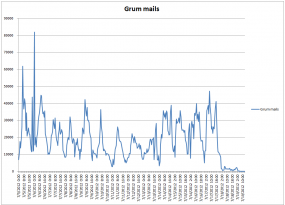The bogus tech support boiler rooms must be working overtime lately. I’ve recently been inundated with horror stories from readers who reported being harassed by unsolicited phone calls from people with Indian accents posing as Microsoft employees and pushing dodgy PC security services.
 These telemarketing scams are nothing new, of course, but they seem to come and go in waves, and right now it’s definitely high tide. One reader’s story in particular really creeped me out. “Ron” wrote in to say his friend’s young daughter was the latest target.
These telemarketing scams are nothing new, of course, but they seem to come and go in waves, and right now it’s definitely high tide. One reader’s story in particular really creeped me out. “Ron” wrote in to say his friend’s young daughter was the latest target.
“A friend called me to tell me that someone called his house, and using some ruse, convinced his 11 year-old daughter to ‘type in some numbers’ into the Run window,” Ron wrote. “When he got home, he turned the computer off, and we assume that it’s compromised and will need to be reformatted.”
Ron said that not long after that incident, he received a similar call. The woman on the phone told him that she was “the authorized security monitoring service for Microsoft Windows,” and that they had detected that his computer was infected with malware, which naturally he needed to have removed.
“The phone number was a Georgia area code, but I’m pretty sure she was from somewhere in India or Pakistan, based on the delay, her accent and use of English — she said her name was Nancy,” Ron said. “She was also calling me at 7:30 am.”
IF AT FIRST YOU DON’T SUCCEED…
Wednesday evening, I heard from “J.C.,” an information security officer from a community bank in Maine. J.C. said he’d just been contacted by two customers who called after being snookered by these scams.
“The scammers said they were from Microsoft and had been shadowing the customers’ computer, and saw they had a virus on their PCs, and would they please open a command prompt and download something,” said J.C., who spoke on the condition that I not print his full name or that of his employer.
J.C. said both customers had been bamboozled by a company in India called NIAS E Business Solutions, to the tune of $199. J.C. said the bank blocked the transactions and canceled the customers’ debit cards. But that didn’t stop NIAS from trying to put through the charges two more times. The first time for a lesser amount of $99. When that failed, the NIAS tried to put through a $120 charge via Western Union!













